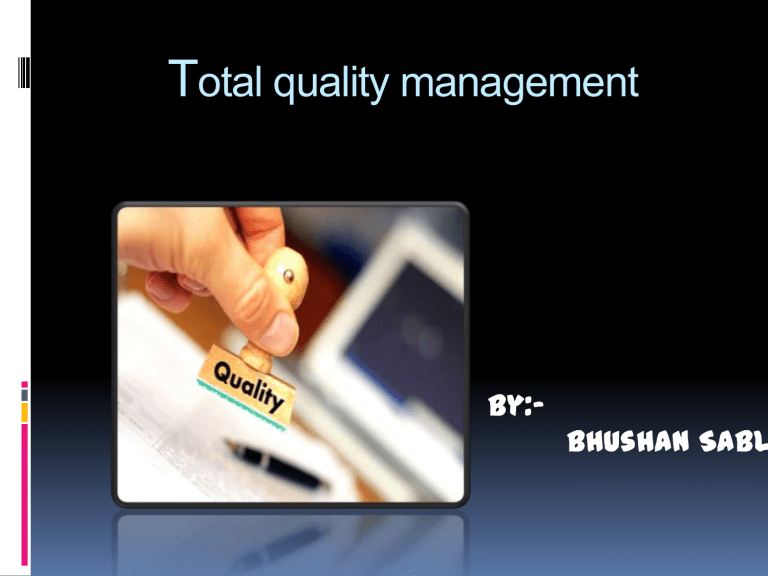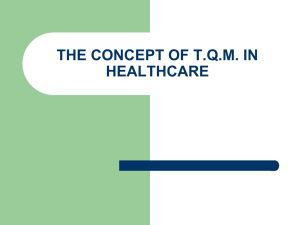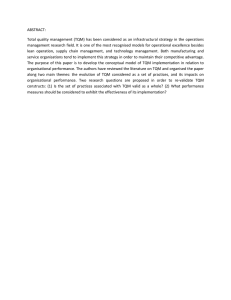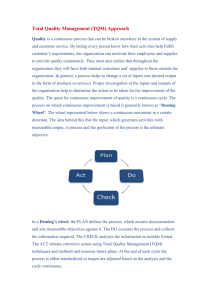
Total quality management By:- Bhushan Sabl Total quality management tools and techniques Introduction Literature review TQM implementation steps Classification of tools Categories of tools and techniques Roadmap for TQM implementation Process measurement Conclusion Total quality management Managing the entire organization so that it excels on all dimensions of products and services that are important to the customer. Fundamental operational goals 1. Careful design of the product or service 2. Ensuring that the organization’s system can consistently produce the design. Literature review TQM can take place in three phases diagnosis and preparation (II) management focus and commitment (III) intensive improvement. (I) The diagnostic and preparation phase of TQM requires the introduction of a number of fact finding tools, some of which are “cost of quality” and “Departmental Purpose Analysis (DPA)”. TQM implementation steps Classification of TQM tools Qualitative tools:- consist mainly of subjective inputs, which often do not intend to measure something of a numerical nature. Quantitative tools:-involve either the extension of historical data or the analysis of objective data, which usually avoid personal biases that sometimes contaminate qualitative tools. Categories of TQM tools Qualitative tools: · flow charts · cause-and-effect diagrams · multi-voting · affinity diagram · process action teams · brainstorming · election grids · task lists. Quantitative tools: · Shewart cycle (PDCA) · control charts · scatter diagrams · Pareto charts · sampling · run charts · histograms. TQM tools as primary area of implementation 1) customer-based 2) management-based 3) employee-based 4) supplier-based 5) process-based 6) product-based. Tools used in implementation Customer based Management based Employee based Supplier Based Process Based Product based Customer survey Communication Empowerm ent Supplier training Just in time Bench marking Customer need analysis leadership circles Quality Supplier documentation Quality Design of improvem experiments ent Crosstraining Supplier certification Lead time reduction Concurrent engineering Bench marking Product flow analysis Quality function deployment Quality teams Brainstormi ng Nominal group technique TQM tools implementation roadmap Process measurement What is happening? How is the process performing? Is the process improving? Is the process satisfying customer requirements? The best tools for this purpose is check sheet, Pareto chart, histogram, scatter diagram, runchart and statistical process control (SPC). The data collected by these tools can be used to measure the process. Other purposes of process measurement understanding what is happening provide objective performance feedback evaluate the need for improvement evaluate the impact of changes set schedules and performance targets. conclusion The correct selection and use of tools and techniques is a vital component of any successful TQM implementation plan. The TQM tools and techniques can be divided into simple tools for solving a special problem and complex one that cover all functions within the company.




